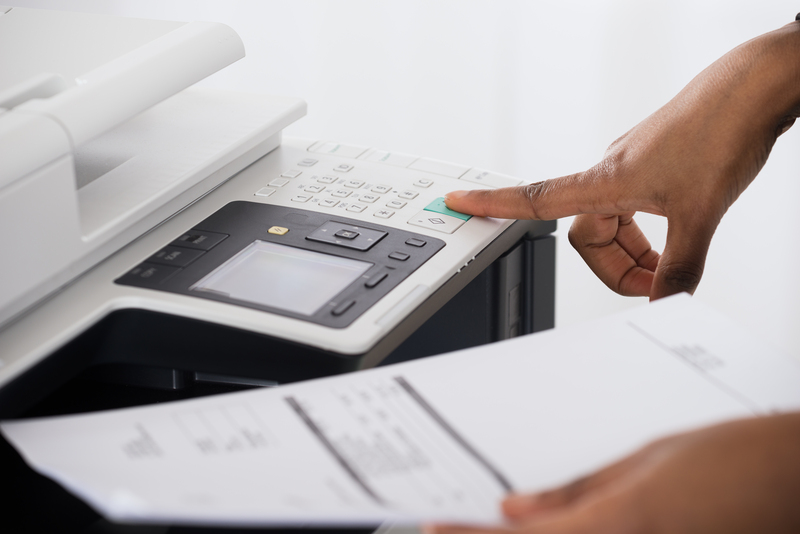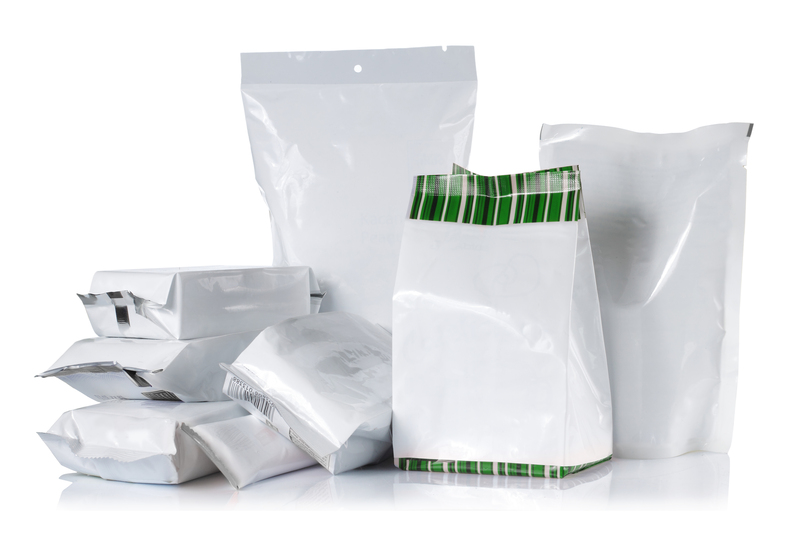Simplicity Unveiled: Adopting a Minimalist Lifestyle
Posted on 30/06/2025
Simplicity Unveiled: Adopting a Minimalist Lifestyle
In a world where complexity often dominates our routines, the minimalist lifestyle emerges as an antidote--an art of purposeful living, clarity, and freedom from excess. Simplicity isn't about deprivation; it's a conscious choice to focus on what truly matters. This comprehensive guide reveals the transformative power of minimalism, actionable steps for decluttering your life, and the enduring rewards of embracing less.
What is Minimalism?
Minimalism is far more than a trend. It is a philosophy that encourages individuals to intentionally eliminate the unnecessary, making space for what's meaningful. Inspired by design, culture, and spirituality, living simply prioritizes quality over quantity.
- Minimalism in daily living: Creating environments free of excessive clutter.
- Minimalistic mindset: Focusing on experiences, not possessions.
- Mindful consumption: Pausing before buying, to assess true need.
The Core Principles of Minimalism
- Intentionality: Every object or activity serves a purposeful role.
- Clarity: Reducing distractions to nurture peace of mind.
- Freedom: Less attachment leads to more time, energy, and creativity.
- Value-driven decisions: Choose what aligns with your core beliefs.

Why Adopt a Minimalist Lifestyle?
Adopting a minimalist way of life offers transformative benefits on personal, financial, and environmental fronts. The rewards frequently ripple into every aspect of existence.
Mental Clarity and Inner Peace
- Clutter bombards the senses, fostering stress--simplicity soothes the mind.
- Minimal living clears out mental "noise," sharpening focus and creativity.
Financial Freedom
- Reduced spending means more savings and less debt.
- Minimalists make conscious purchases, investing only in essentials and quality.
Environmental Impact
- Lower consumption equals a smaller carbon footprint.
- Minimalists often opt for sustainable products, reducing waste.
More Time for What Matters
- Less time cleaning, organizing, and maintaining possessions.
- More time and energy to devote to relationships, hobbies, and passions.
Decluttering: The First Step Towards Simplicity
Embarking on your journey toward a minimalist lifestyle starts with decluttering. This intentional act is more than just tidying--it's about evaluating each possession's place in your life.
How to Start Decluttering
- Set a clear goal: Define your vision. Do you want a serene bedroom, an organized kitchen, or a minimalist wardrobe?
- Begin small: Tackle one room or category at a time--clothes, books, kitchenware.
- Use guiding questions: Ask, "Do I love this? Do I use it regularly? Does it bring me joy or serve a purpose?"
- Sort items: Create piles: keep, donate, recycle/sell, and discard.
- Organize what remains: Give everything a dedicated space to support continued simplicity.
Designing a Minimalist Home
Our physical spaces are reflections of our inner worlds. Thoughtful, minimalist design nurtures calm and supports intentional living.
Essential Elements of a Minimalist Home
- Neutral color schemes: Whites, grays, and muted hues create a peaceful backdrop.
- Uncluttered surfaces: Keep countertops and tables as bare as possible.
- Quality over quantity: Invest in fewer, high-quality pieces of furniture.
- Functional decor: Choose items that are both beautiful and practical.
- Natural light: Open windows, use sheer curtains, and embrace natural materials.
Tips for Maintaining Minimalism at Home
- One in, one out policy: For every new item, let go of something old.
- Regular reviews: Schedule seasonal or yearly home audits.
- Mindful shopping: Avoid impulse purchases and marketing traps.
- Multi-purpose solutions: Opt for storage and furniture that serve multiple functions.
Minimalism Beyond Possessions
While the journey often begins with physical clutter, minimalism encompasses all areas of life. It is a comprehensive lifestyle, freeing us from overpacked schedules, emotional baggage, and digital overwhelm.
Digital Decluttering
- Unsubscribe: Leave newsletters and media that no longer serve you.
- Organize files: Keep laptops, phones, and devices streamlined and backed up.
- Social media boundaries: Reduce screen time; engage only with meaningful content.
Simplifying Your Schedule
- Prioritize: Focus on commitments that align with values and passions.
- Practice saying no: Respect your time and energy--it's finite.
- Build in white space: Schedule unstructured time for rest, reflection, and creativity.
Emotional Minimalism
- Let go: Release grudges, toxic relationships, and self-limiting beliefs.
- Meditate: Practice mindfulness to stay anchored in the present moment.
- Cultivate gratitude: Focus on abundance instead of lack.
The Minimalist Wardrobe: Capsule Collection for Simplicity
A minimalist wardrobe - commonly called a capsule wardrobe - is a collection of versatile, timeless pieces that mix and match effortlessly. It eliminates decision fatigue and supports sustainable fashion.
Building Your Capsule Wardrobe
- Assess your style: Identify colors, silhouettes, and fabrics you love and wear often.
- Choose quality basics: Invest in classic jeans, plain tees, shirts, and shoes.
- Layer for versatility: Incorporate cardigans, jackets, and scarves that work multiple seasons.
- Limit numbers: Aim for 30-40 total pieces, including shoes and accessories.
- Rotate seasonally: Store off-season items, review and edit regularly.
Minimalism and Mindfulness
Minimalist living and mindfulness go hand in hand. Both emphasize living in the present and being intentional with attention and resources.
Practices to Foster Mindful Simplicity
- Single-tasking: Give each activity your full focus, whether eating, working, or conversing.
- Gratitude journaling: Record daily moments of joy, no matter how small.
- Silent moments: Embrace quiet time to recharge and gain clarity.
Common Myths About Minimalism
Minimalism is sometimes misunderstood. Let's unravel some popular myths:
- Myth 1: Minimalism is only for the rich.
Reality: Minimalism is accessible to anyone. It's about intention, not income. - Myth 2: Minimalist homes are cold and sterile.
Reality: Minimalist spaces can be warm and inviting, reflecting your personality. - Myth 3: It's about owning as little as possible.
Reality: True minimalism is about what you value most, not arbitrary numbers.
Minimalism for Families
Minimalist living is possible--and rewarding--for families and busy households. Involving children in the process teaches empathy, resourcefulness, and respect.
Family Minimalism Tips
- Lead by example: Model decluttering and mindful consumption.
- Make tidy-up fun: Turn cleaning sessions into games.
- Limit toys: Choose open-ended, high-quality playthings over excessive gadgets.
- Prioritize experiences: Opt for hiking, cooking together, or travel over buying more stuff.
Challenges and How to Overcome Them
Transitioning to a simpler lifestyle isn't without its hurdles. Here's how to move past common obstacles:
- Sentimental attachment: Take photos of keepsakes, keep only what holds deep meaning, and honor the memory--not just the object.
- Pressure from others: Stand firm in your decisions; explain your reasons without seeking approval.
- Perfectionism: Minimalism is a journey, not a race or competition. Focus on progress, not perfection.
- Guilt over wasted money: Remember, the "cost" of clutter is ongoing. Letting go is a form of self-care.
Minimalism as a Lifelong Practice
Like any philosophy, living with less is an ongoing process of discovery and change. As seasons of life shift--career, family, health--so too does your relationship with "enough." Be gentle with yourself and allow your minimalist journey to evolve.
Getting Started on Your Simplicity Journey
Ready to unveil the rewards of a simple, minimalist lifestyle? Begin today:
- Pick one space to declutter--desk, drawer, closet.
- Set clear, achievable goals and celebrate each milestone.
- Stay inspired. Read books, podcasts, or blogs on intentional living.
- Connect with others. Minimalism communities help you stay motivated.
- Practice gratitude. As you let go, embrace the abundance you already have.

Resources to Deepen Your Minimalist Approach
- Books: The Life-Changing Magic of Tidying Up by Marie Kondo, Goodbye, Things by Fumio Sasaki, Digital Minimalism by Cal Newport.
- Podcasts: The Minimalists Podcast, Optimal Living Daily, Slow Your Home Podcast.
- Blogs: Becoming Minimalist, Zen Habits, Be More With Less.
Conclusion: Finding Joy in Minimalist Simplicity
Minimalism is not about less for the sake of less; it is about more of what matters. By consciously choosing simplicity, you reclaim your time, refocus your energy, and rediscover meaning in daily life.
Embrace minimalism--not as a rigid rule, but as an invitation to live better, deeper, and lighter. Let the journey of simplicity unveil the beauty and abundance that was waiting all along.
```








